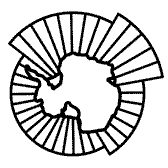An overview of Southern Ocean zooplankton data: abundance, biomass, feeding and functional relationships (submitted to the 2008 Joint CCAMLR-IWC Workshop)
There is an enormous amount of data on Southern Ocean (SO) zooplankton, mostly on their distribution with a minority addressing rate processes. This review aims to summarise these data and show where it resides, to assist SO food-web modellers or those with limited specialist knowledge of SO zooplankton. First, a brief overview is provided of the diversity and basic biology of SO zooplankton, with an emphasis on abundance, distribution and feeding. Second, advice is provided on the uses, strengths and limitations of zooplankton data as inputs to SO data compilations or food-web models. Copepods overall comprise >75% of the SO zooplankton biomass (excluding Euphausia superba). Total mesozooplankton biomass density differs little between the Antarctic sectors, but latitudinally it is maximal in the Polar Frontal Zone and declines to the north and south. Those compiling data on numerical density (no. m–2 or no. m–3) need to allow for differences in the extent of identification of early larval stages. Likewise, the time of year, depth of sampling and mesh size of sampler greatly influence the recorded abundance, since the populations can make seasonal vertical migrations and their pulsed reproduction causes great seasonal changes in size structure and abundance. Other issues are specific to polar environments, for example, lipid storage which leads to significantly different length-mass and mass-rate relationships than are reported in global literature compilations. Likewise, stenothermy (narrow temperature tolerance) means that fixed (Q10-type) temperature relationships based on global literature compilations must be applied with great caution in SO-specific studies. Protozoa/micrometazoa (<200 μm) are the main grazers in the SO, since mesozooplankton typically remove <30% of primary production. This emphasises the dominant role of microbial food chains involving small metazoans, relative to the classic short diatom-krill-whale type food chains. Even within regions of abundant krill, copepod production in summer roughly triples that of postlarval E. superba. This fact reflects a large flow of energy through multiple trophic levels, via copepods and their major invertebrate predators such as other predatory copepods, chaetognaths, small omnivorous euphausiids, amphipods up to myctophid fish and birds.

